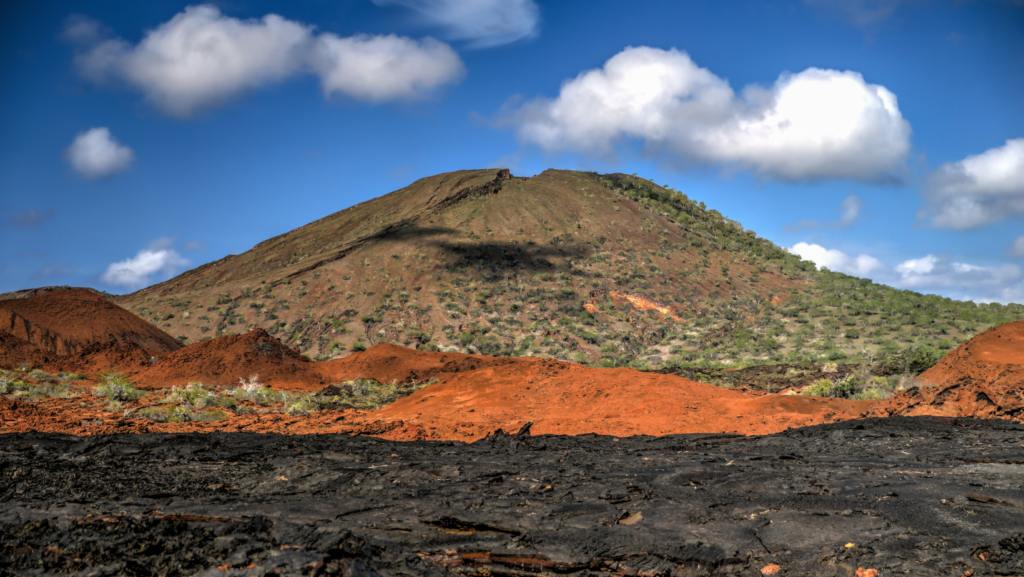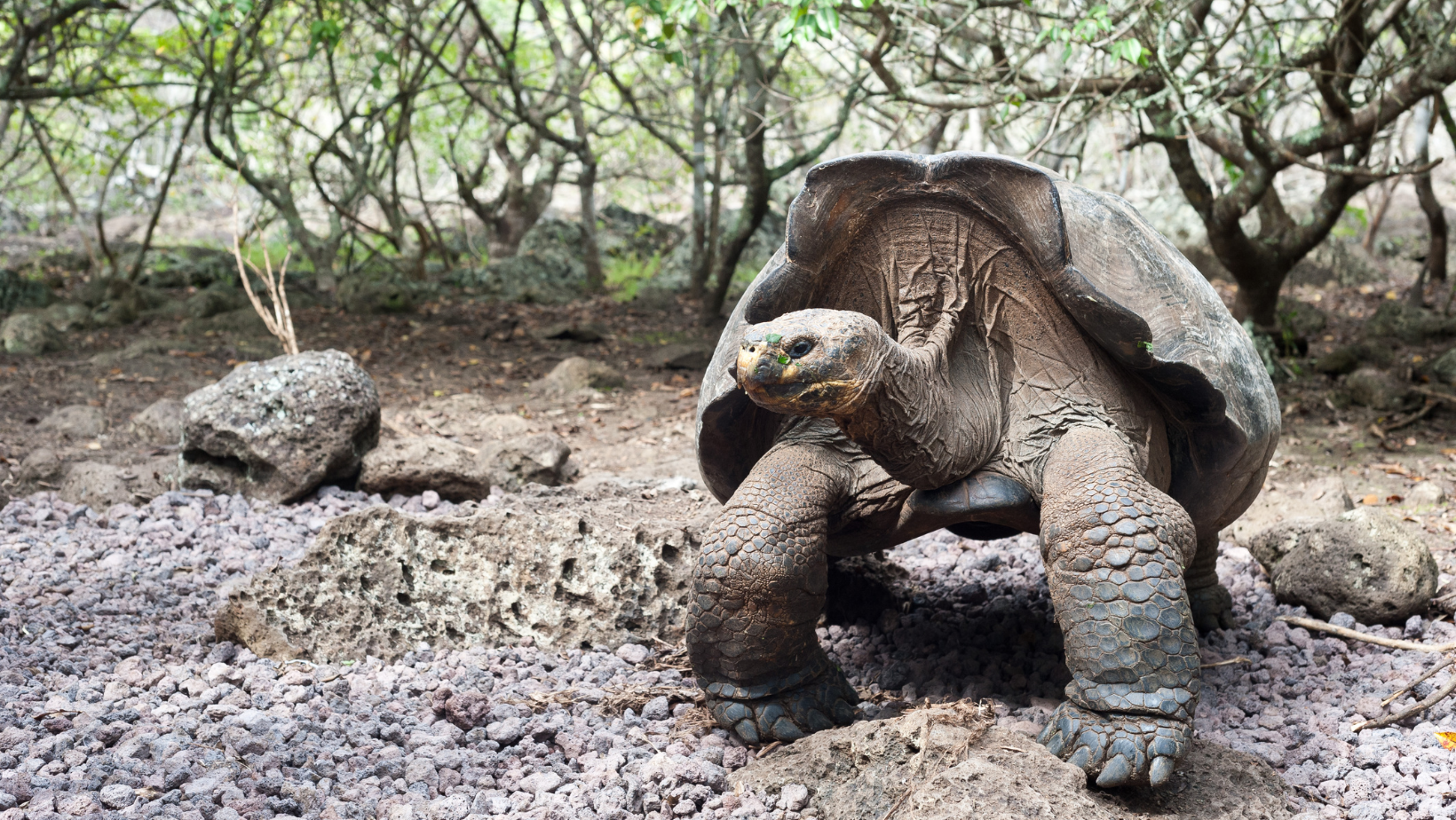
Pinta Island is the northernmost of the larger islands and is relatively isolated from the rest of the archipelago. The island is named after one of the three ships that took part in Christopher Columbus’s first expedition to the Americas. Pinta is the original home of Lonesome George, perhaps the most famous tortoise in the world, the sole known surviving Pinta tortoise (that is now instinct). There are no tourist visitor sites on the island. Due to the many young volcanoes, the island has very sparse vegetation. Pinta is still home to Swallow-tailed Gulls, Galápagos Hawks, marine iguanas and fur seals. This island is only accessible with a few naturalist cruise itineraries.

Floreana is one of the 4 inhabited islands of the archipelago. It has only around a hundred inhabitants. The island offer very good wildlife watching opportunities. You can see flamingos, Nazca boobies, Blue-footed Boobies, Floreana Mockingbirds, sea lions and more. The island is full of important history for the Galapagos archipelago and which is worth learning about! Floreana can be visited by cruise, day trip or by staying overnight in the only hotel on the island: The Wittmer Pension.
Point of interest: Cormorant Point
Cormorant Point is located on the northern part of Floreana Island. It features a golden-greenish beach that is compose of a mixture of minerals, all of which are responsible for the sand’s unique color. Not far inland, a brackish lake home to a variety of migratory and coastal birds, is also ideal for flamingo-watching. Here, there’s quite a large percentage of flamingos living in one single pond ,considering the small population of Galapagos Flamingos.
Floreana also offers a couple of interesting dive sites: Devil’s Crown, Champion Islet, Cormorant Point

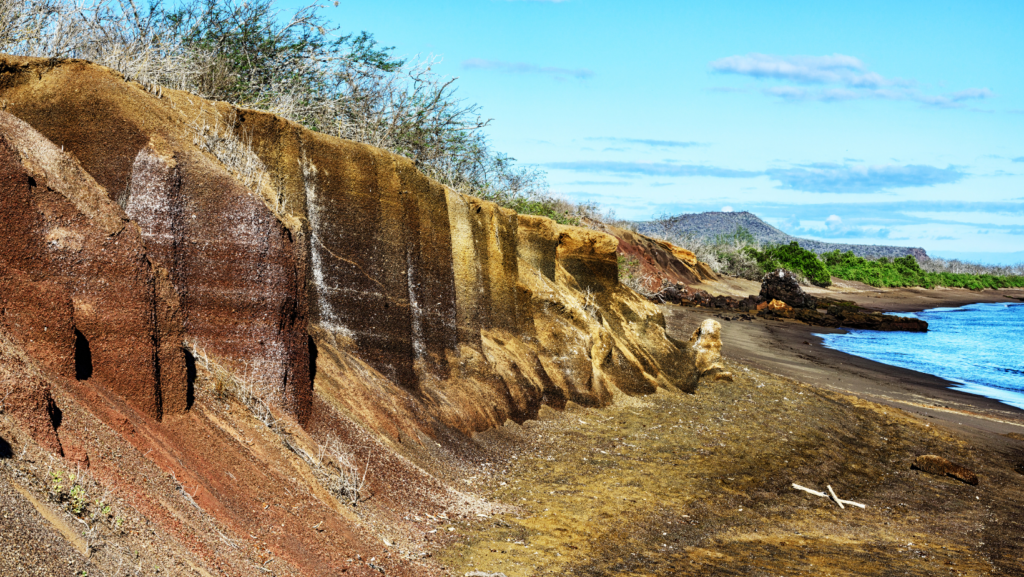


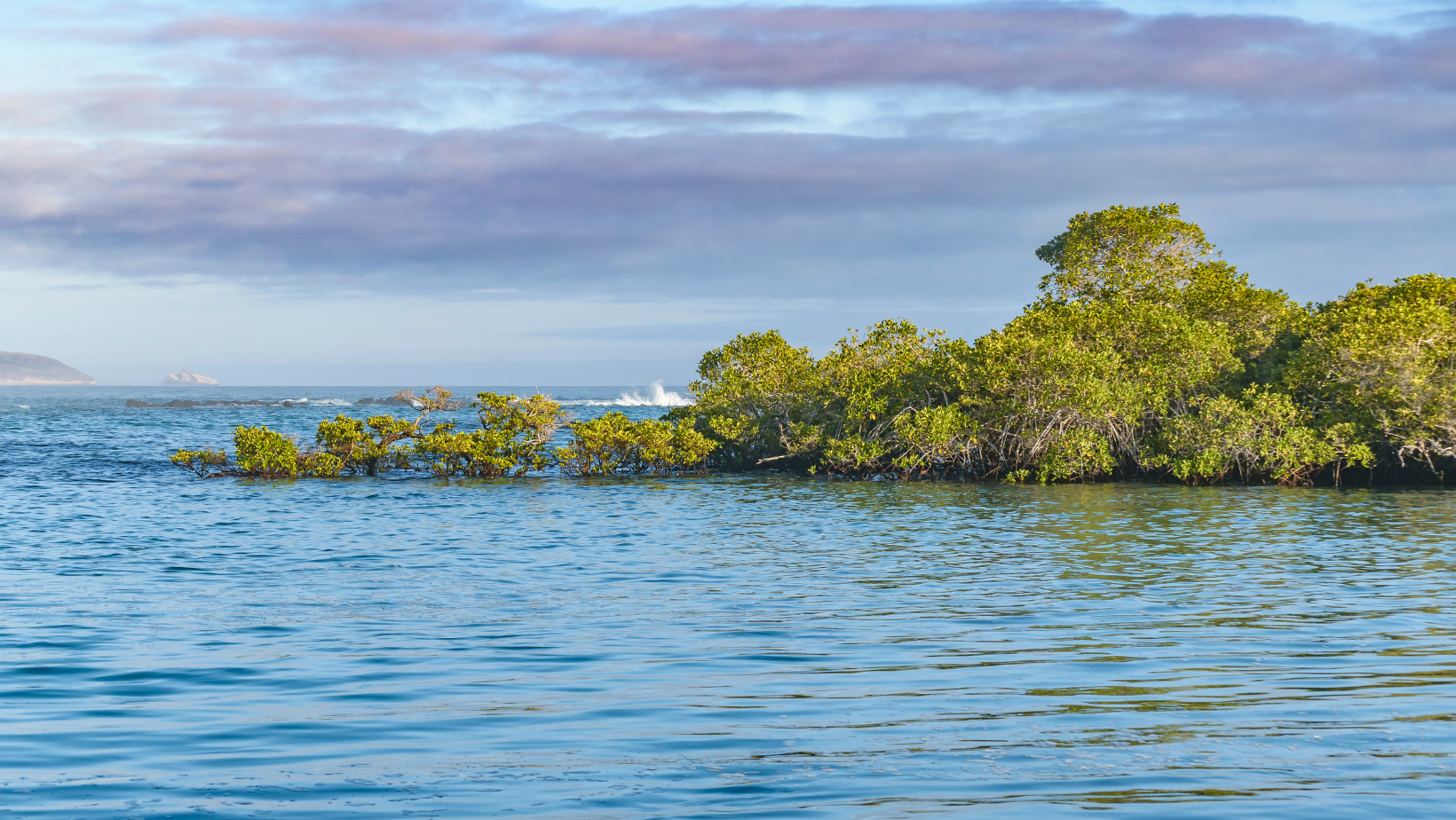
This site is a short walk from the port of Puerto Villamil. You can easily access it independently to go snorkeling. It is accessed by a small path in the mangroves where you can observe marine iguanas and sea lions.
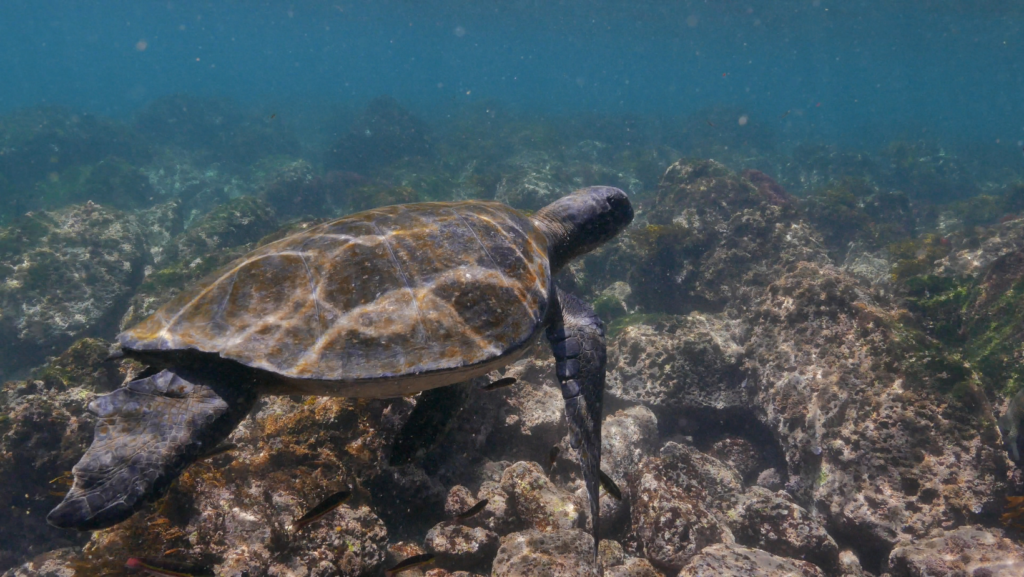



The Sierra Negra volcano has one of the largest crater in the world, with a diameter of 10 km. This volcano, still active, experienced its last eruption in June 2018. One of the superb hikes to do takes you from the Sierra Negra volcano to the Chico volcano, through a variety of vegetation and offering spectacular views of the entire island. This is one of the most beautiful long hikes in the entire archipelago.
Another hike takes you to the other side, to the sulfur mine where you will observe the fumaroles coming out of the active volcano, as well as the mountain covered with the characteristic yellow sulfur. This 3.5 km trail crosses magnificent volcanic landscapes. The drive from Puerto Villamil to the trail entrance takes approximately 45 minutes.



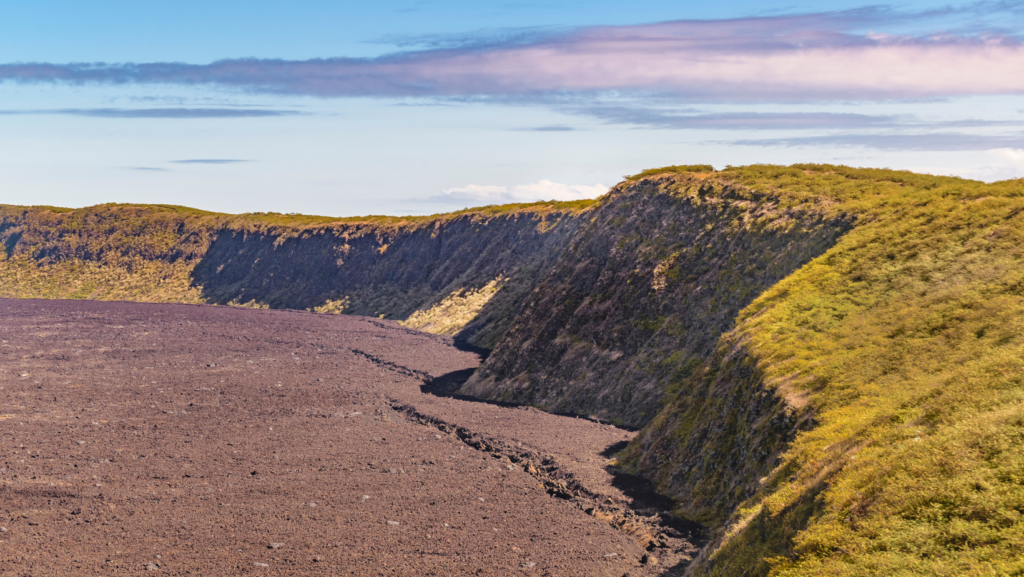


Located at approximately 6 km west of Puerto Villamil, this site is of great historical interest. Between 1940 and 1950, Isabela Island was used as a prison. This wall is the vestige of that time when the prisoners built, stone by stone, this gigantic wall which will be of no use. Several prisoners died during the construction of this wall, due to the extreme conditions encountered. This site can be visited independently. You can go there leisurely on foot to make it a full-day activity or rent a bike in town to speed up the trip.
The path leading to this site is absolutely beautiful. You will pass through mangroves, beaches and you can stop at different viewpoints.

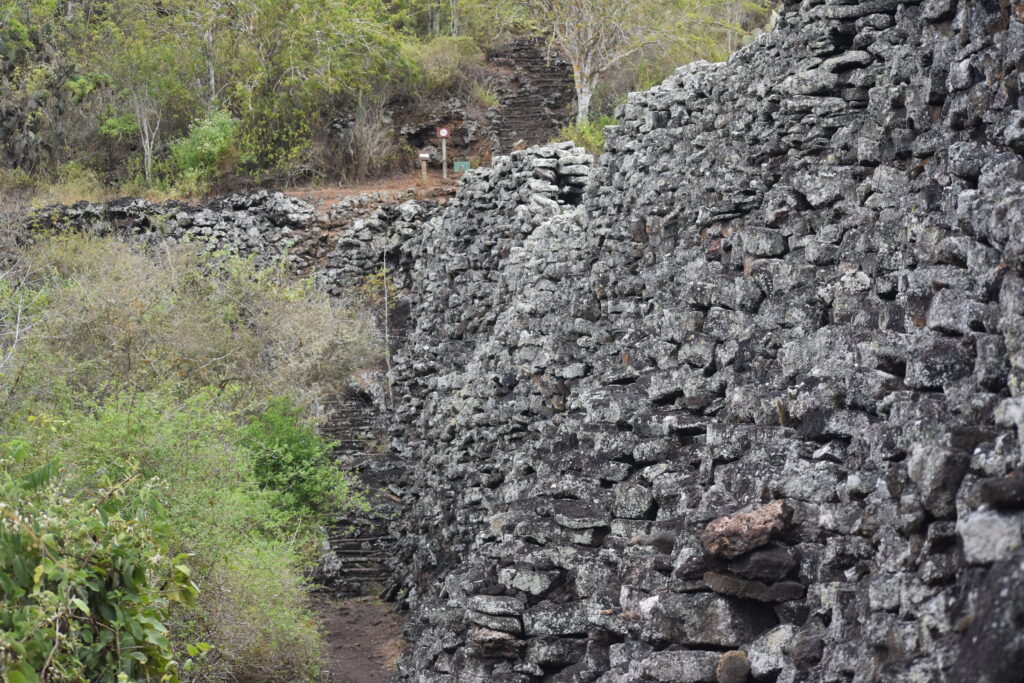

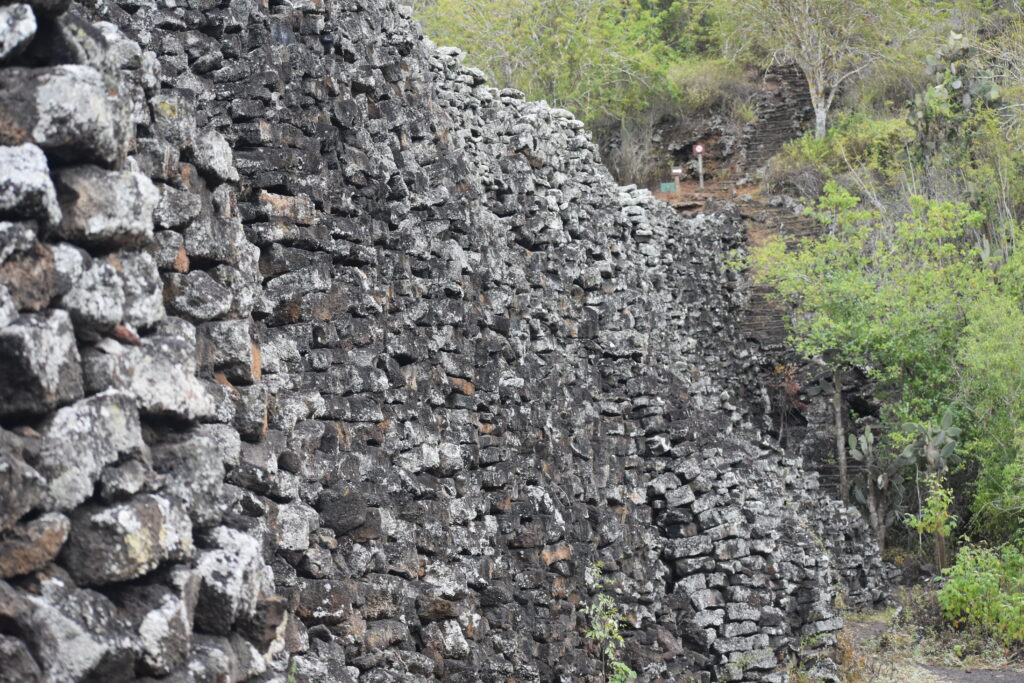
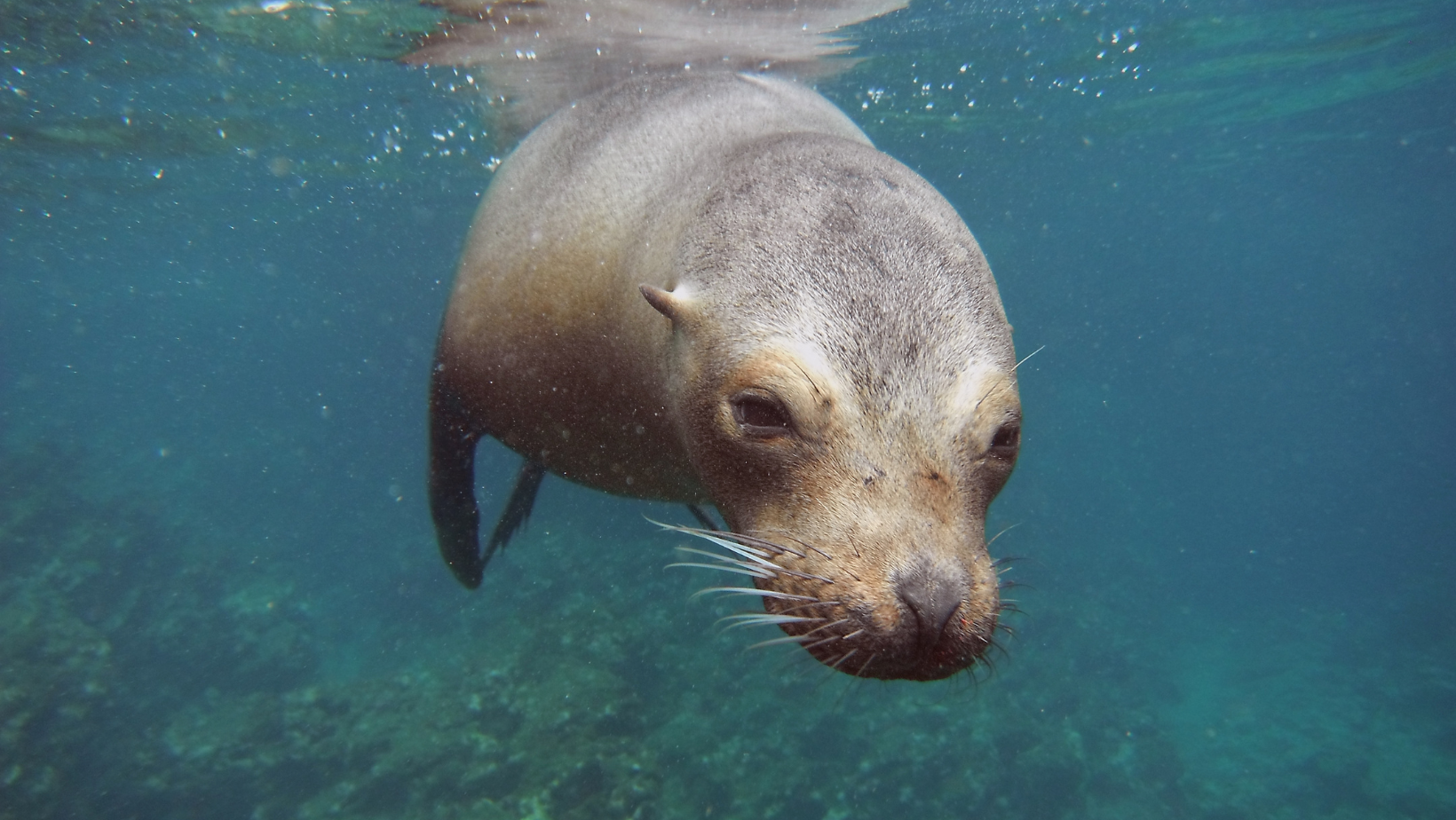
Las Tintoreras is a small volcanic islet located about 10 minutes by boat from the port of Puerto Villamil. This islet is full of life! It is possible to snorkel with penguins, white-tipped sharks, sea lions, marine iguanas and sea turtles. This is a pleasant activity that can be done in half a day.



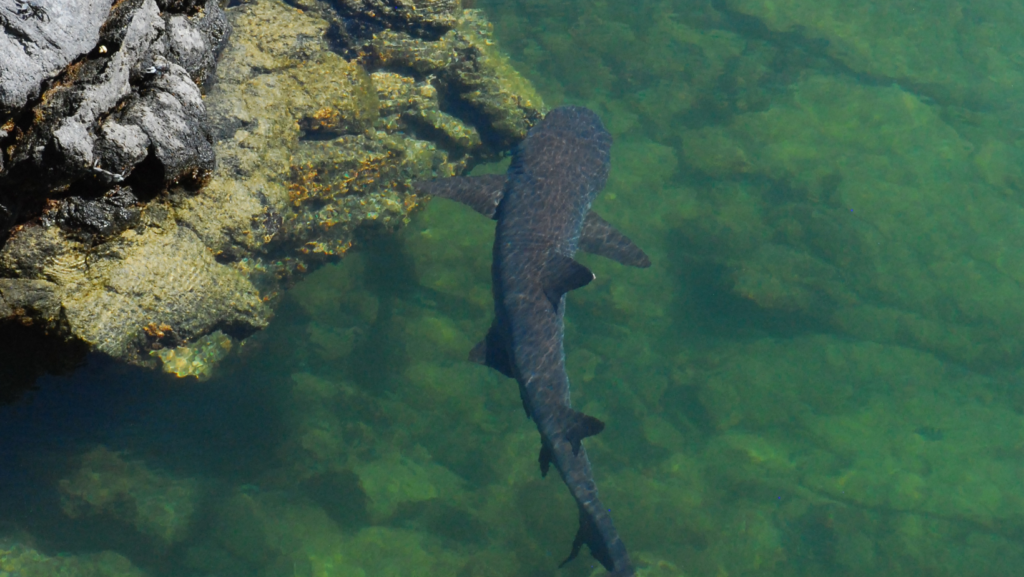
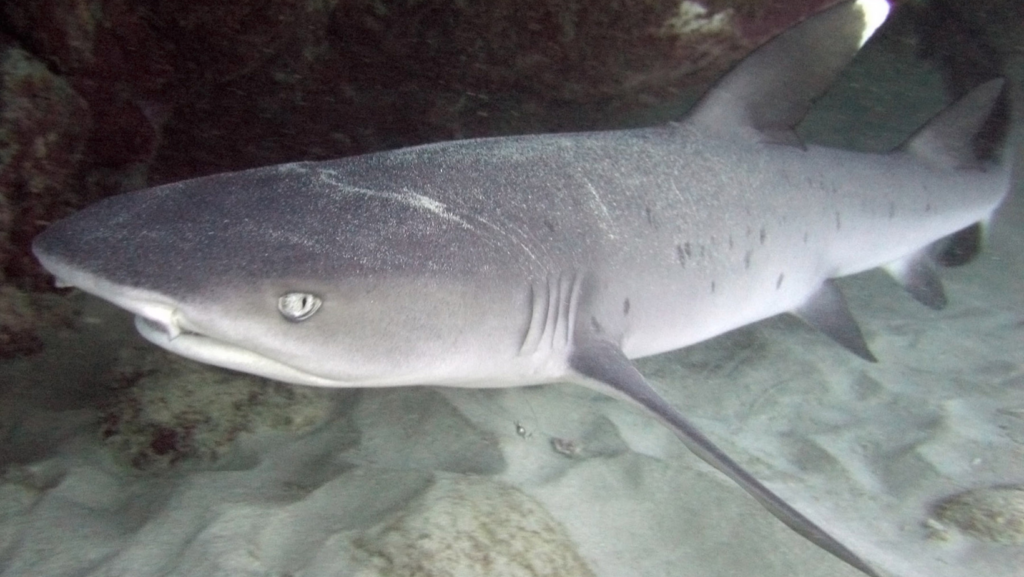
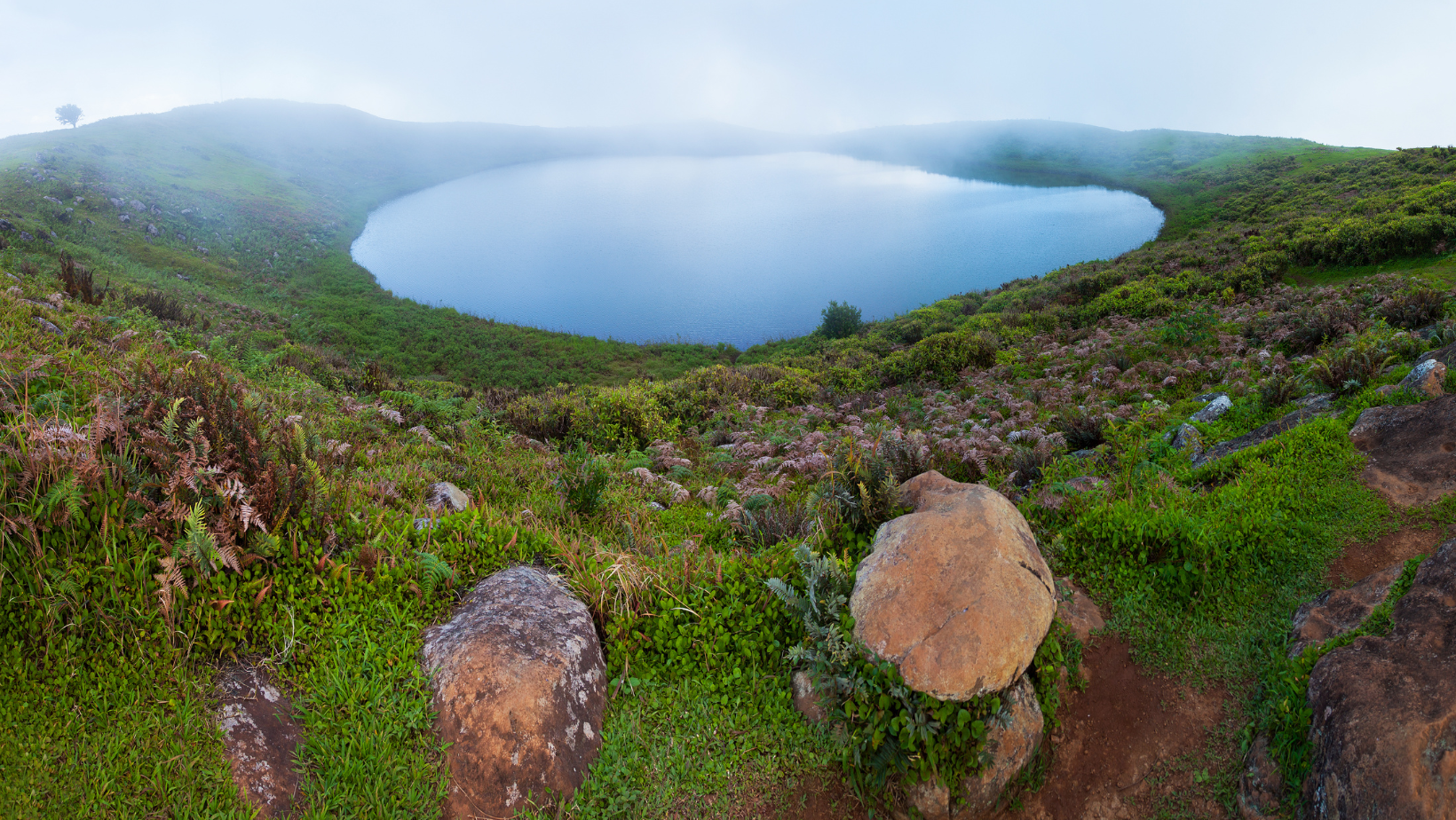
El Junco is a lagoon formed by a collapsed cone of a long-extinct volcano that has transform into a fresh water source over the years. Located in the highlands of San Cristobal island, this is one of the very few permanent sources of fresh water on the whole archipelago. You can hike to the lagoon by using the long series of steps to the top. You can also walk around the crater to observe local fauna and flora and enjoy the spectacular view over the entire island of San Cristobal. This is a nice hike to benefit the fresh air of the island.
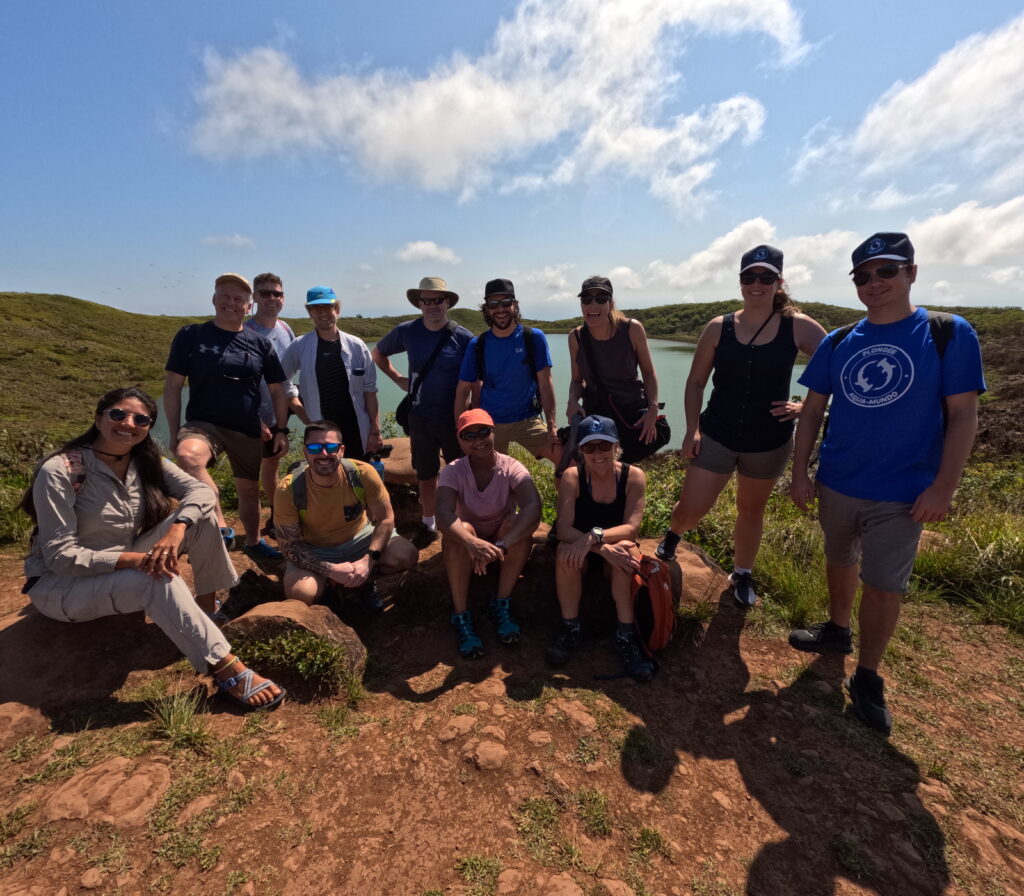
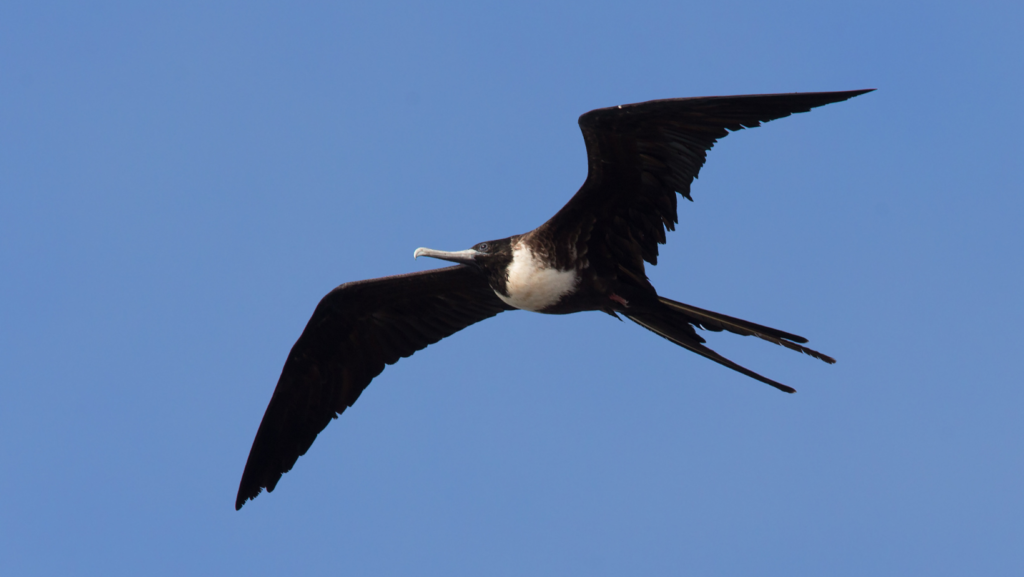
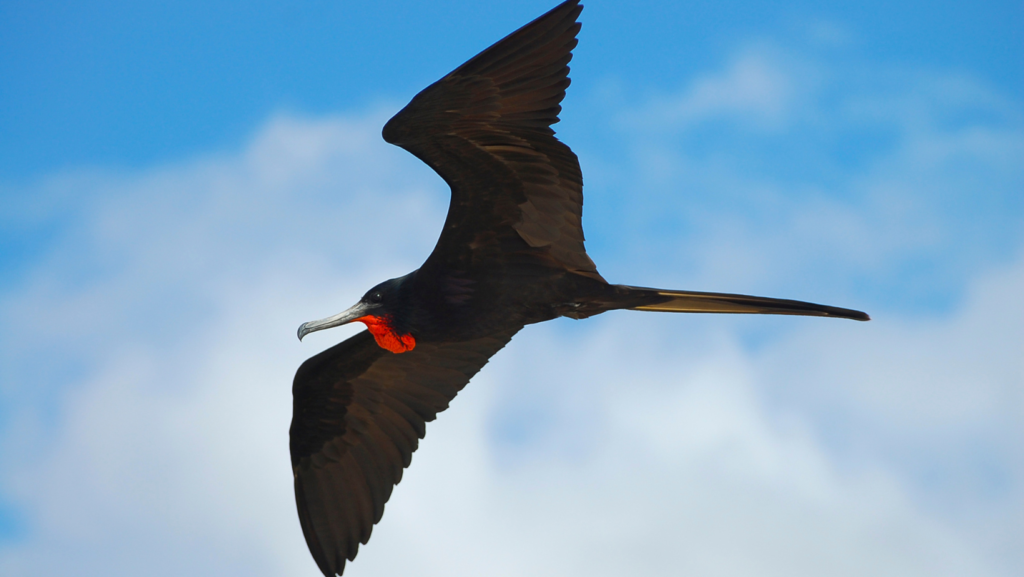
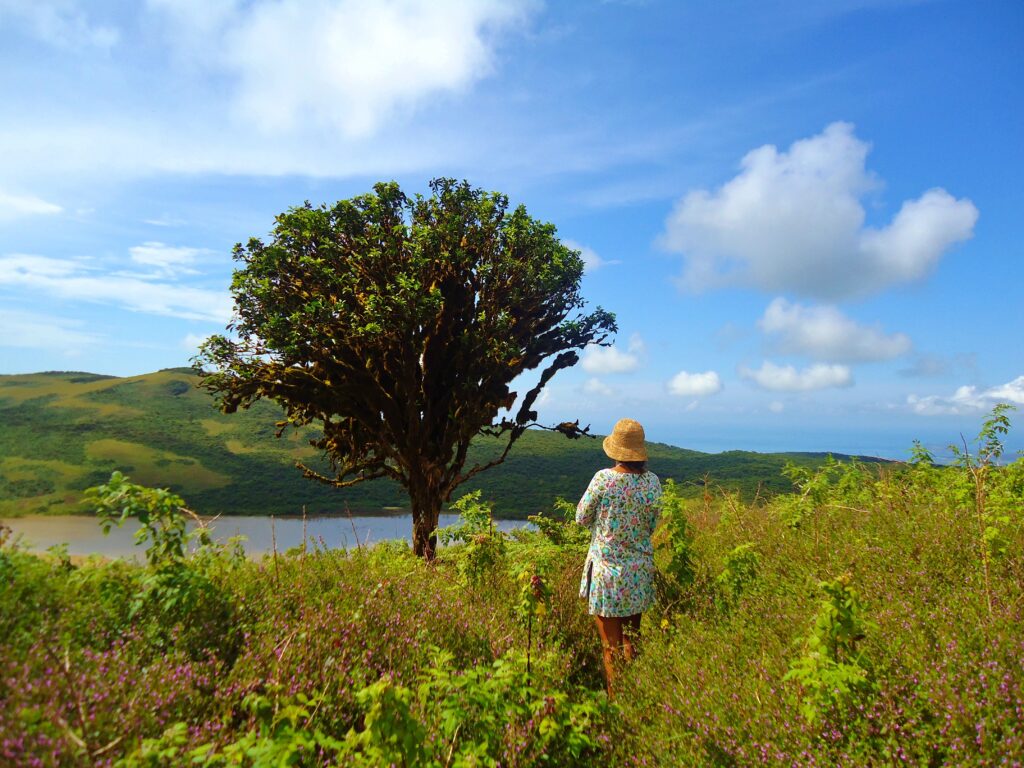

This impressive cape is made up of lava tubes that have collapsed into the sea, creating bridges above and below the sea. In addition to the spectacular landscapes found here, Los Tuneles is a snorkeling paradise ! You will be able to observe penguins, sharks, rays, sea turtles and much more while int the water. During this day, you can do light hiking and snorkeling. The boat ride to get there takes about an hour back and forth Puerto villamil.

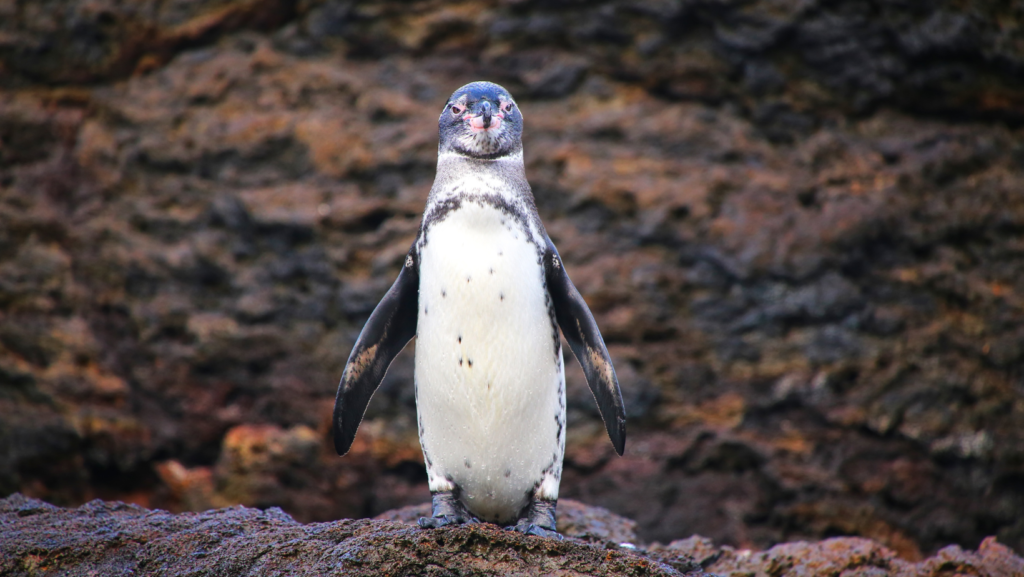



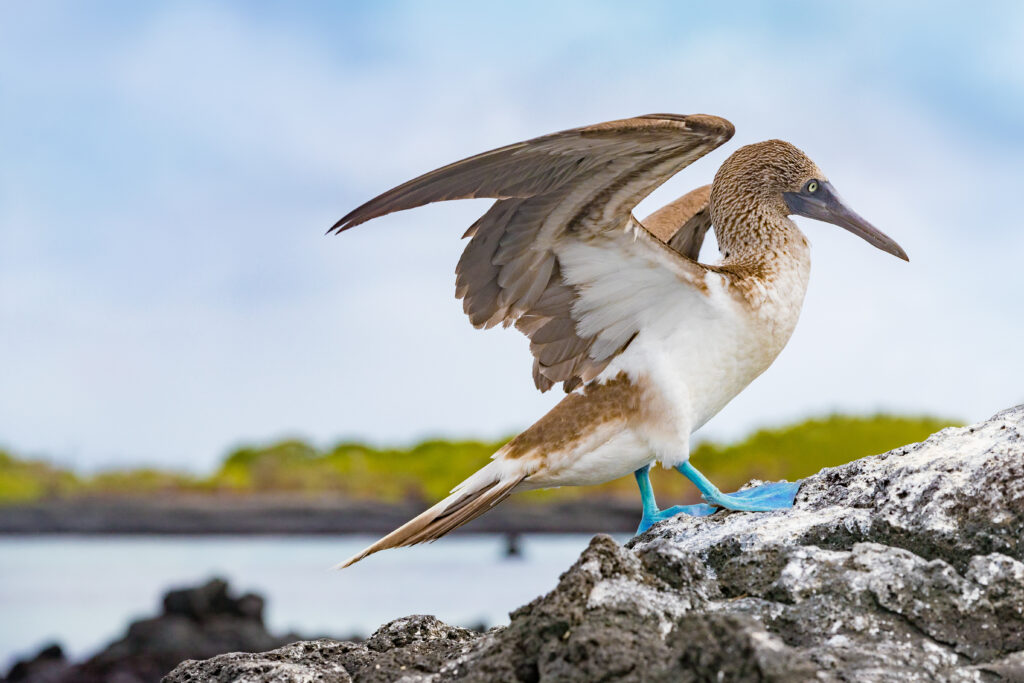
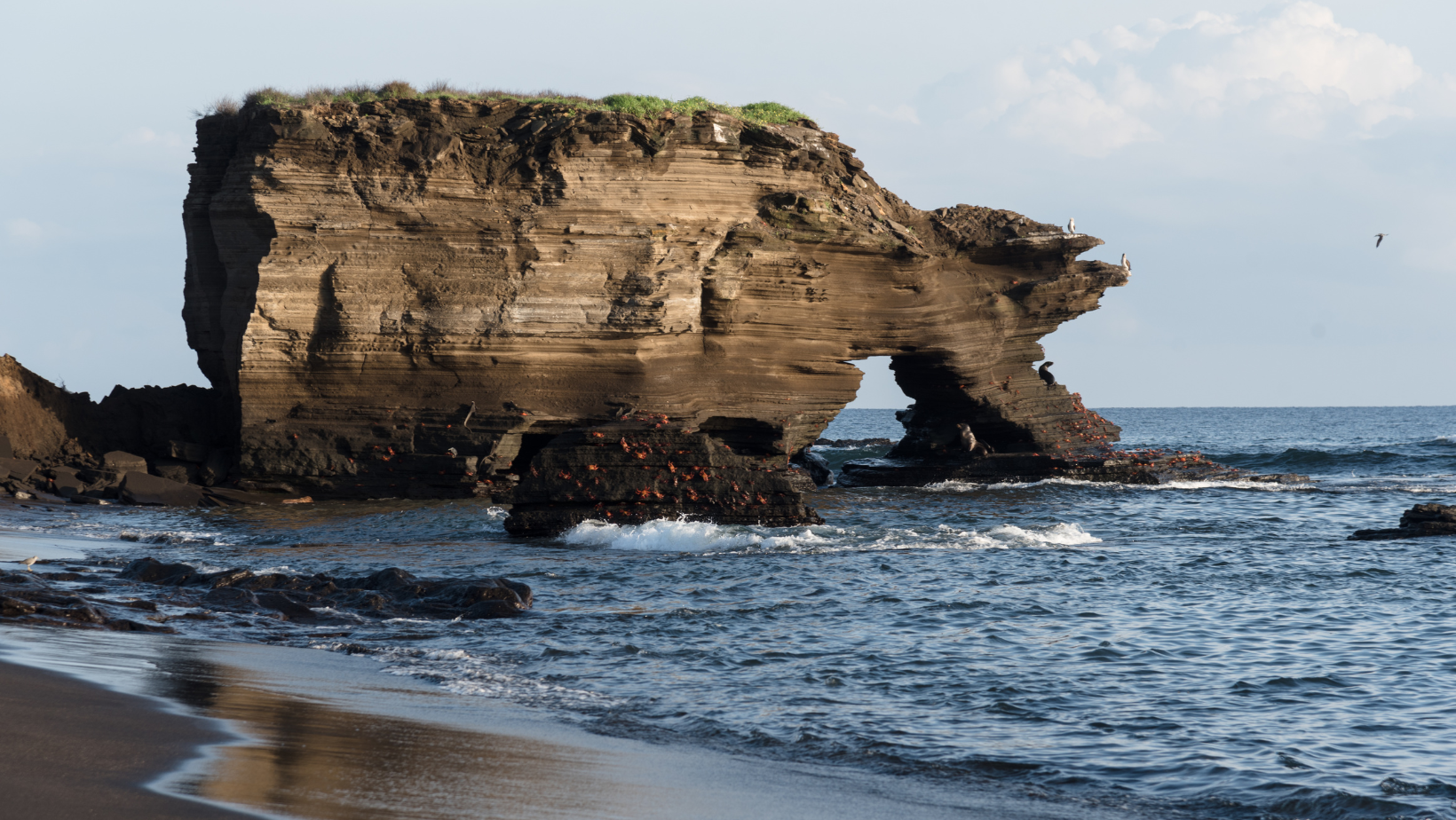
Puerto Egas, located on the western side of Santiago island (south end of James Bay), was once the site of a salt mine. It is now a beautiful tourist site that can visited by foot. The rough volcanic rocks make for some interesting walking. Puerto Egas offer two separate trails: The first along the coast to the fur seal grottoes and the second inland to the Salt Mine Volcano. The Galapagos fur seal prefers rocky coastlines where shade is available and the grottoes of Puerto Egas are ideal. The coastal trail ends at the grottoes. The inland trail is approximately 3 km long and ends at the top of the salt mine crater. During your hiking in Puerto Egas, you can easily spot sea lions, fur seals, marine iguanas, pelicans, blue-footed boobies and lava herons. Excursions to Puerto Egas are offer on naturalist cruises.
Dive site
Puerto Egas also offer amazing scuba diving. Dives sites offer shallow dives suitable for beginner level divers. The bottom consists of a irregular slope, mainly made up of sand and no deeper than 12 meters (40ft). Current is usually very little here, thus making it a enjoyable dive. Marine life is abundant, however, visibility may be a little limited. You can almost always see fur seals and sea lions during the dives. You can also find some animals here that you usually only find around Isabela Island such as sea pens, horn sharks, sea horses and sand anemones.
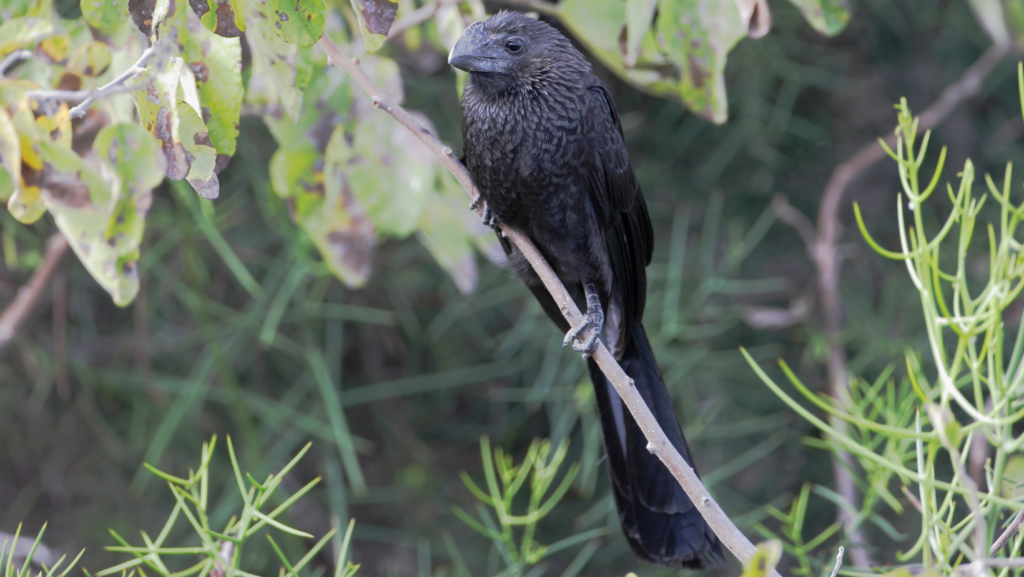
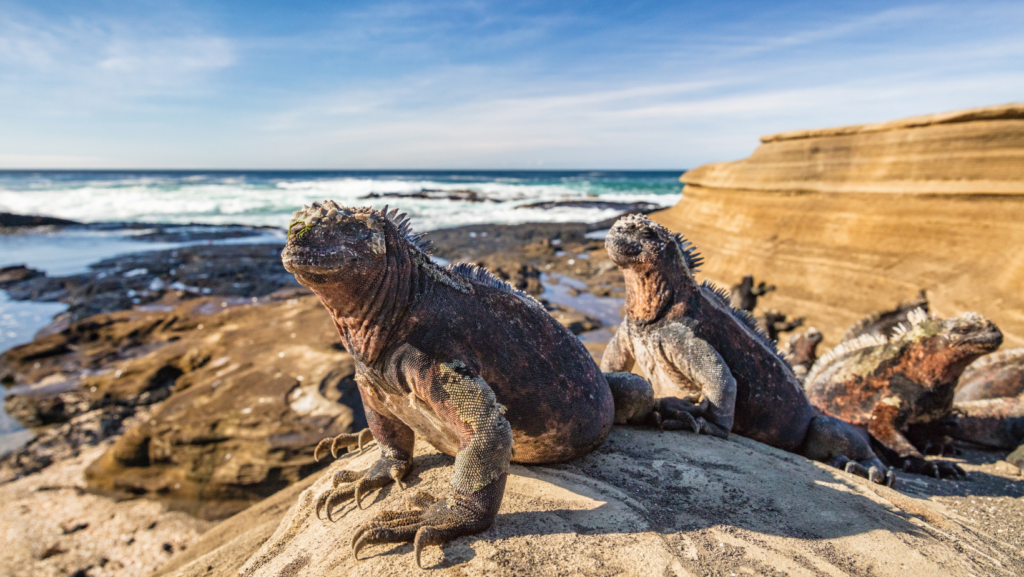
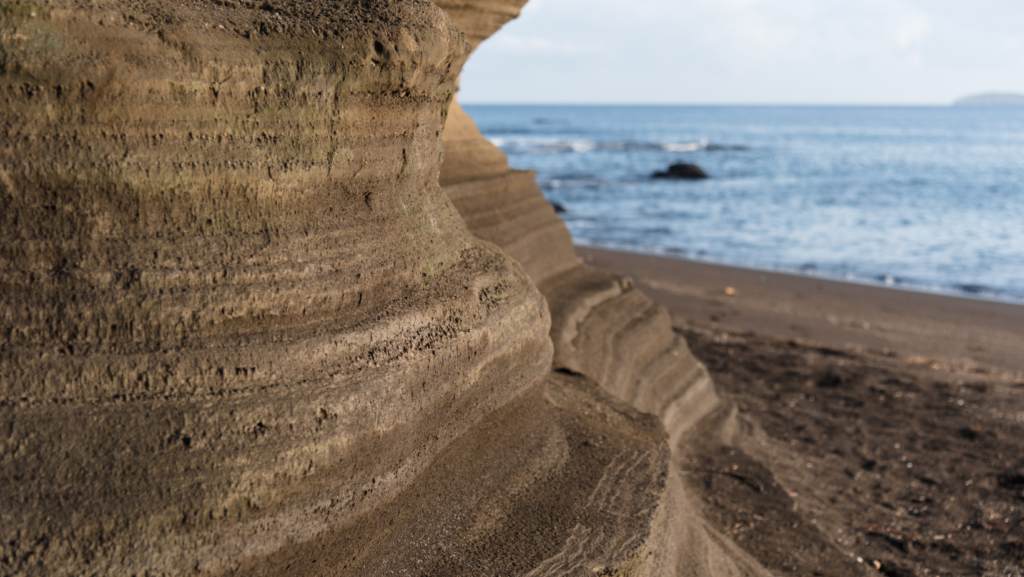

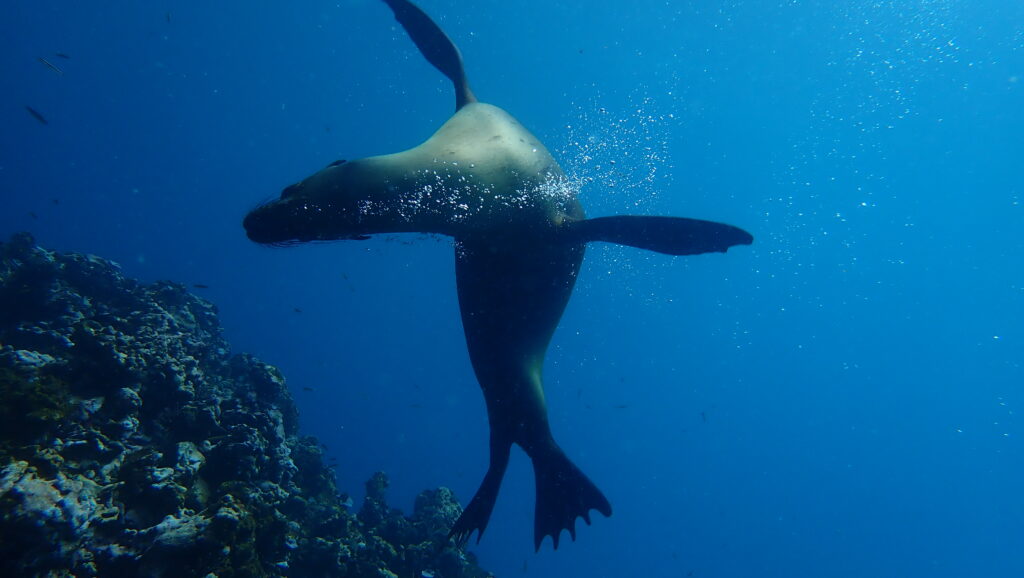

Sullivan Bay is located on the east part of Santiago Island and presents a great geologic interest. The area is cover in lava flows which makes it a very spectacular place to visit. Here, you can enjoy the marine wildlife of the Galapagos while snorkeling. Sullivan Bay is one of the most beautiful places in the Galapagos to snorkel with its crystal clear waters!
Visiting Sullivan Bay is often combined with visiting Bartolome Island, as the areas are close to each other. This place can be visited on a naturalist cruise or on a day trip from Santa Cruz.

